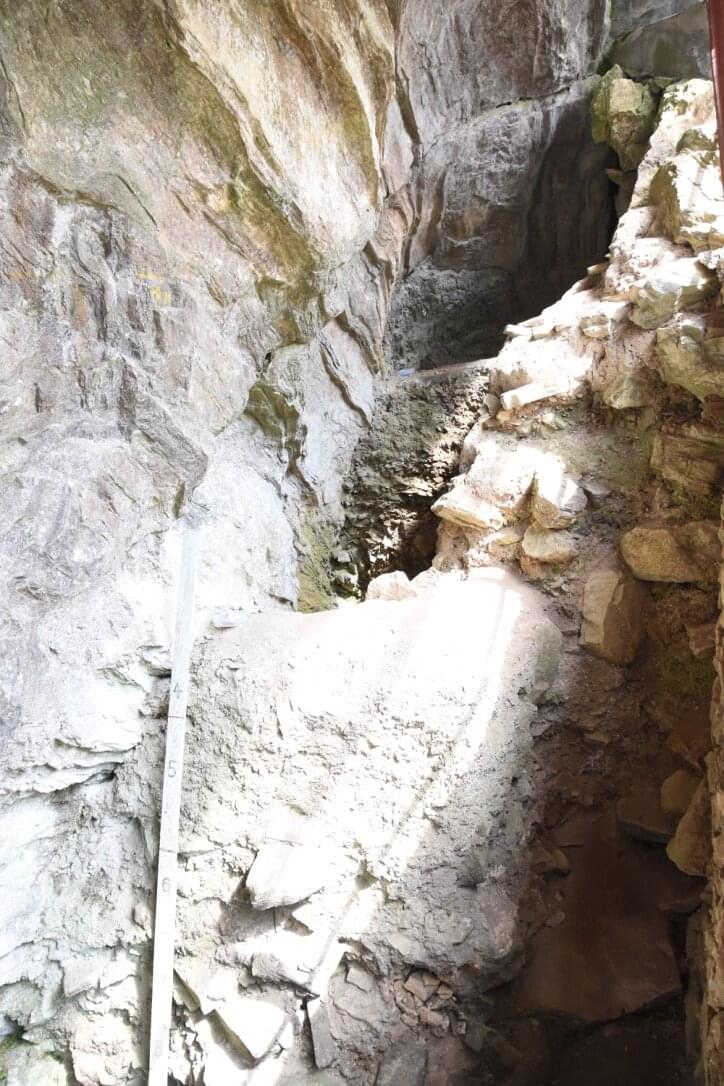The American West is running out of water—and Big Oil, of all things, can help fix it.
It’s time to repurpose our oil and gas infrastructure to do something good for the planet: transport water to the parched West.


Ancient DNA extracted from human bones has rewritten early Japanese history by underlining that modern day populations in Japan have a tripartite genetic origin—a finding that refines previously accepted views of a dual genomic ancestry.
Twelve newly sequenced ancient Japanese genomes show that modern day populations do indeed show the genetic signatures of early indigenous Jomon hunter-gatherer-fishers and immigrant Yayoi farmers—but also add a third genetic component that is linked to the Kofun peoples, whose culture spread in Japan between the 3rd and 7th centuries.

“We were confident that the rocks of the Champua region were even older than previously thought,” says Mazumder, 53 now an associate professor of applied geosciences at the German University of Technology in Oman.
They were right. In 2,018 they published a paper in the journal Scientific Reports on two zircon crystals they extracted from rocks taken from the Champua site. While the rocks were 3.4 billion years old, the crystals were much older, at an estimated 4 and 4.2 billion years old.

Altana AI, a startup building a database for global supply chain networks, today announced that it raised $15 million in a series A funding round led by GV with participation from Floating Point, Ridgeline Partners, Amadeus Capital Partners, and Schematic Ventures. The proceeds, which bring the company’s total raised to $22 million to date, will be used to further develop Altana’s data and AI systems and launch new machine learning and network analysis tools, according to CEO Evan Smith.
Trade wars, the rise of ecommerce, pandemic supply chain shocks, and sustainability concerns are driving fundamental changes to supply chain networks and global trade flows. Nearly 75% of companies report supply chain disruptions in some capacity due to pandemic-related transportation restrictions. And in a recent IBM survey, 40% of executives stressed the need for spare capacity to weather future crises.
Altana’s product aims to solve these challenges with a platform that connects and learns from billions of supply chain data points. It answers questions about products, shipments, companies, and networks, filtering out illicit trade and targeting bad actors and security threats across global commerce networks.

He explored the possibility of using gene therapy or gene editing—technologies that were dominating headlines for their ability to tackle other rare genetic disorders. But scientists told him those approaches would be difficult to implement for Dravet. Instead, a newfangled idea called transfer RNA (tRNA) therapy seemed like it might be the answer.
Drug Discovery tRNA therapies could help restore proteins lost in translation.
A new class of therapies based on transfer RNA could treat forms of cystic fibrosis, muscular dystrophy, genetic epilepsies, and more by.
Ryan Cross
A very good illustration.
Experiments with dummy heads and masks. Credit: TU Wien
Tiny droplets loaded with viruses disappear more slowly after exhalation than previous models suggested. Experiments and simulations by TU Wien (Vienna) can now explain this.
It is easier to get infected in winter than in summer — this is true for the Corona pandemic, for influenza, and for other viral diseases. Relative humidity plays an important role in this. Outdoors, it is much higher outside in winter than in summer, as can be seen from the fact that our breath condenses into droplets in the cold air.

A number of recent studies have homed in on compelling associations between mental health and the microbiome. These insights into strange gut-brain connections have found links between depression and certain species of gut bacteria, and one study even found symptoms of schizophrenia could be transferred from mouse to mouse via fecal transplants.
But are these microbiome perturbations unique to specific psychiatric conditions, or is there a more common gut bacteria signature shared amongst several conditions?

Some types of restricted and repetitive behaviors become more prevalent among autistic children and teenagers over time, depending on their age and intellectual ability, whereas others decrease, two new studies show.
The results lend fresh support to the argument that restricted and repetitive behaviors — a core diagnostic trait that includes repetitive movements, insistence on sameness, sensory sensitivities and restricted interests — are too diverse to be lumped together.
“This is a complex behavioral domain that comprises several different subdomains that likely have different causes and might respond to different treatments,” says Mirko Uljarević, senior research fellow at the University of Melbourne in Victoria, Australia, who led one of the studies.

